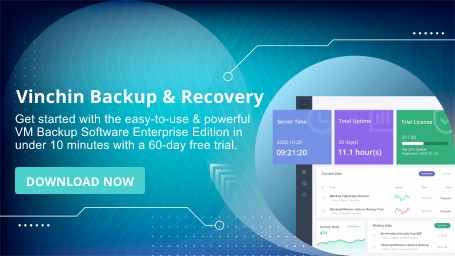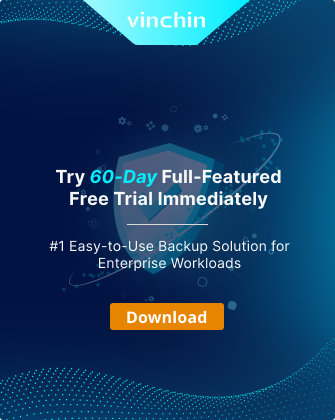-
What is an EC2 Snapshot?
-
Restoring an EC2 Instance from a Snapshot
-
Backup EC2 instances with Vinchin Backup & Recovery
-
Restore EC2 instance from snapshot FAQs
-
Conclusion
In the vast expanse of cloud computing, AWS offers a myriad of services designed to cater to diverse business needs. Among these, Amazon EC2 has become the backbone for countless applications, providing scalable and reliable computing resources. However, in the dynamic landscape of digital operations, instances can face unforeseen disruptions. So backup instances is quite important. The previous post has mentioned that there are several ways that you can backup EC2 instances including through AMI backups or snapshot. In this article, we will delve into the process of restoring an EC2 instance from a snapshot, ensuring that your digital heartbeat remains robust and uninterrupted.
What is an EC2 Snapshot?
An Amazon EC2 Snapshot is a point-in-time, incremental backup of a disk volume in the AWS cloud. This disk volume is called an Amazon EBS volume. Snapshots are stored in Amazon S3 and can be used to create new EBS volumes or to restore existing ones.
EC2 snapshots are useful for data protection, data archiving, and data replication purposes. They allow you to create a copy of your EBS volume at any given time, which can then be used to recover data in case of accidental deletion, corruption, or hardware failure. Additionally, snapshots can be used to replicate data across different AWS regions or availability zones for disaster recovery purposes.
EC2 snapshots are incremental, meaning that only the blocks that have changed since the last snapshot are saved, reducing storage costs and minimizing the time required to create a snapshot. You can also share snapshots with other AWS accounts or make them public, allowing others to use them as a starting point for their own EBS volumes.
Restoring an EC2 Instance from a Snapshot
1. Create a New EBS Volume from the Snapshot
Open the AWS Management Console and navigate to the EC2 dashboard. In the left-hand menu, select Snapshots.
Find and select the snapshot you want to restore from. Click on Actions and choose Create volume from snapshot.
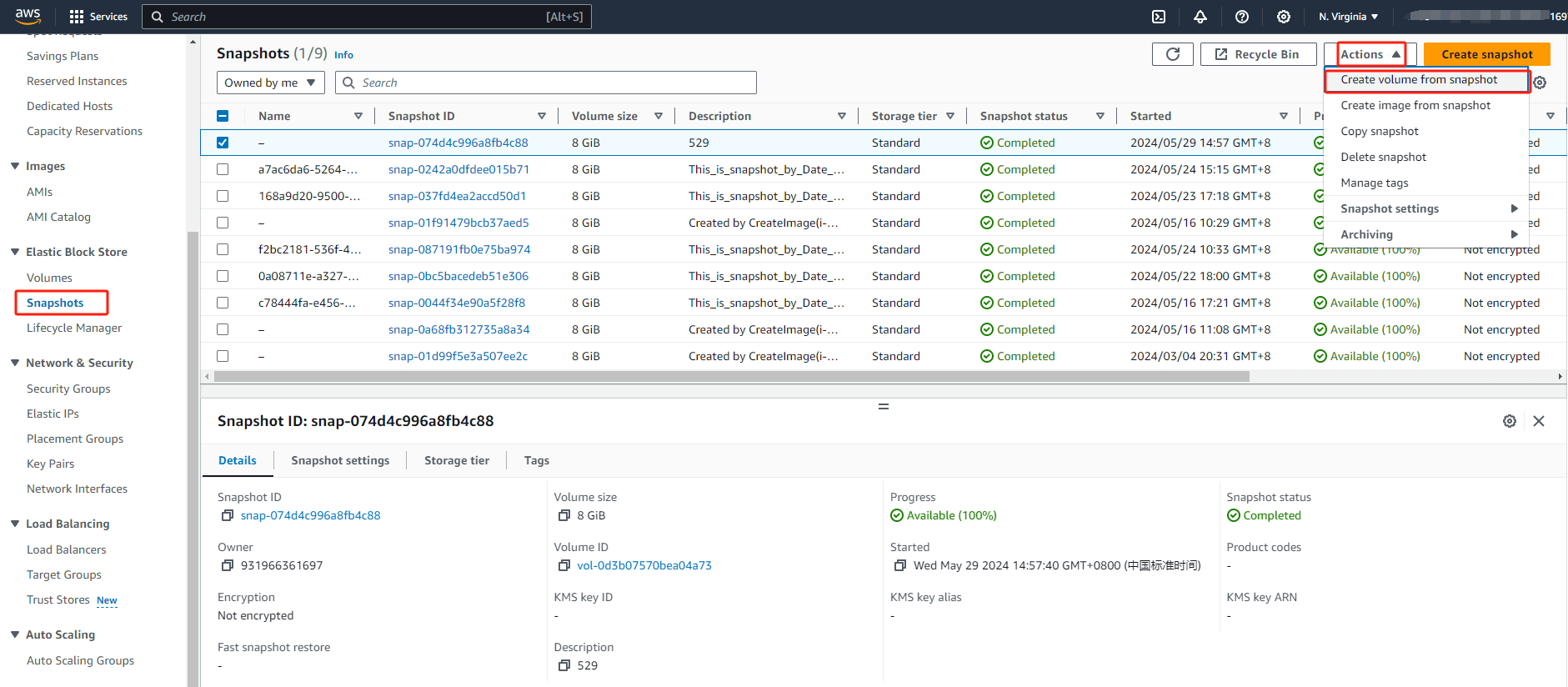
Configure the volume settings as needed. And specify the availability zone where you want the volume to be created. This should match the availability zone of the EC2 instance you plan to attach the volume to. Then click Create Volume.
2. Attach the EBS Volume to an EC2 Instance
Navigate to the Volumes section in the EC2 dashboard. Find the newly created volume (its state should be “available").
Select the volume, click Actions, and choose Attach volume.

Select the instance you want to attach the volume to from the dropdown list. And specify the device name and click Attach.
3. Launch a New EC2 Instance from the EBS Volume
If you are creating a new instance, navigate to the EC2 dashboard and click Launch Instance.
Choose an AMI that matches your desired operating system and configuration.

Select an instance type and configure instance details as needed.

When you reach the Configure storage step, click on Add New Volume.

Select a snapshot and configure the volume size and type based on your requirements.
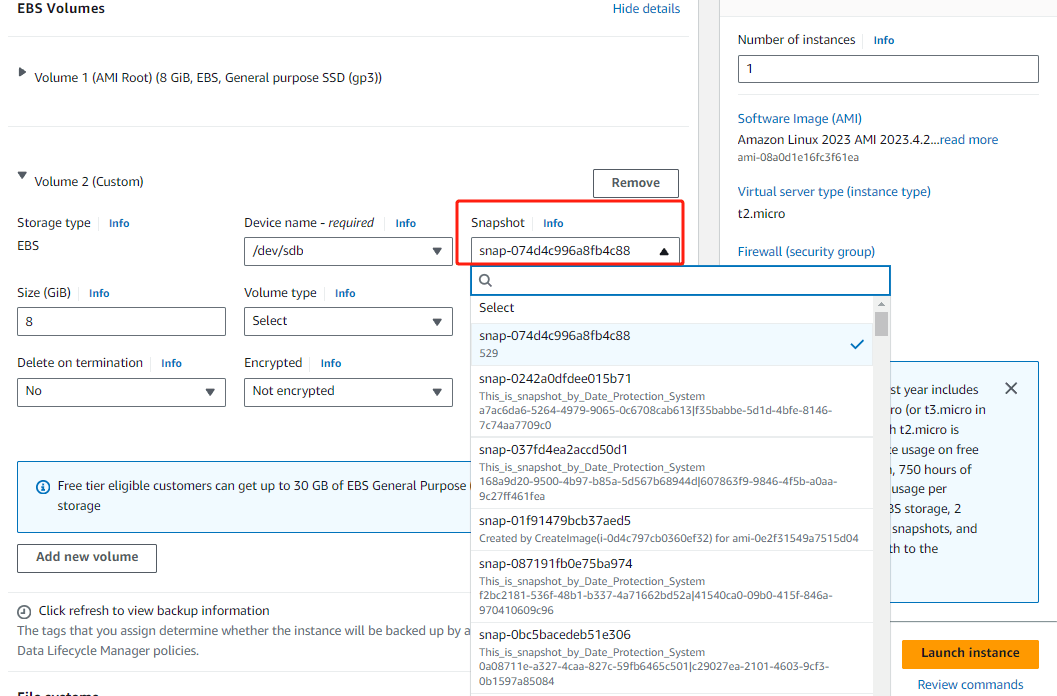
Complete the instance launch process by configuring security groups, reviewing, and launching the instance.
4. Connect to the Restored Instance
After the instance is running, connect to it using SSH or RDP.
Verify that the data and configuration are intact by checking the files and settings.
Backup EC2 instances with Vinchin Backup & Recovery
Vinchin Backup & Recovery is a robust data safeguarding platform tailored to simplify the management of backups and restorations for virtual machines, including those hosted on Amazon EC2.
This solution ensures a seamless experience in handling EC2 backups across diverse AWS regions, offering versatile backup methodologies such as full, incremental, and differential backups. It empowers users with flexible recovery options, accommodating both whole and granular instance restoration, with the added capability to restore in alternative regions or transition to different virtualization environments like VMware and Hyper-V. Vinchin further eases infrastructure oversight through its user-friendly interface, streamlining backup setups and facilitating smooth V2V migrations. Consequently, it fortifies cloud data security and ensures business resilience.
To backup EC2 instance with Vinchin Backup & Recovery, follow these steps:
1. Select the EC2 instance to be backed up.
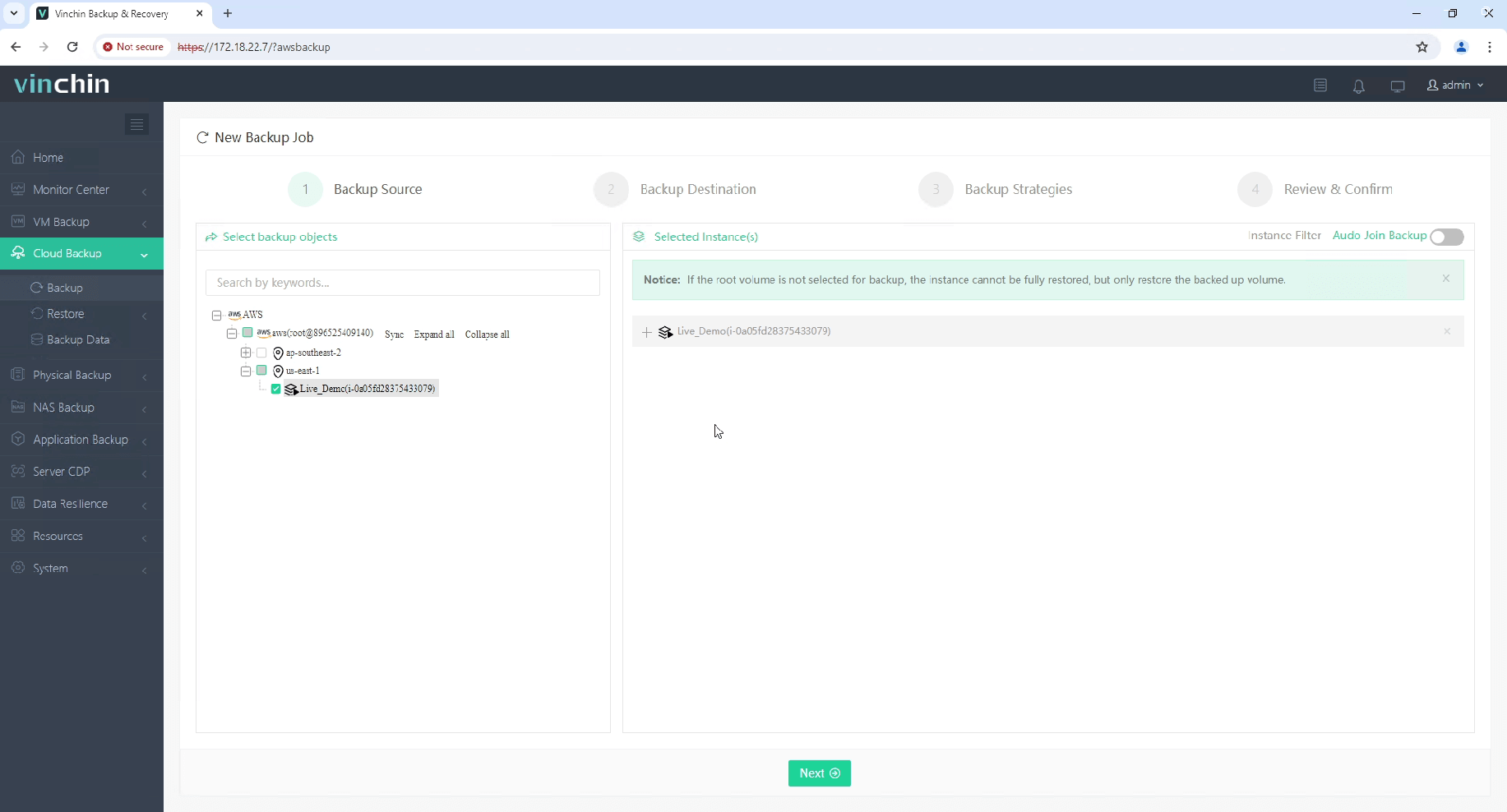
2. Select the backup destination.

3. Select the backup strategies.
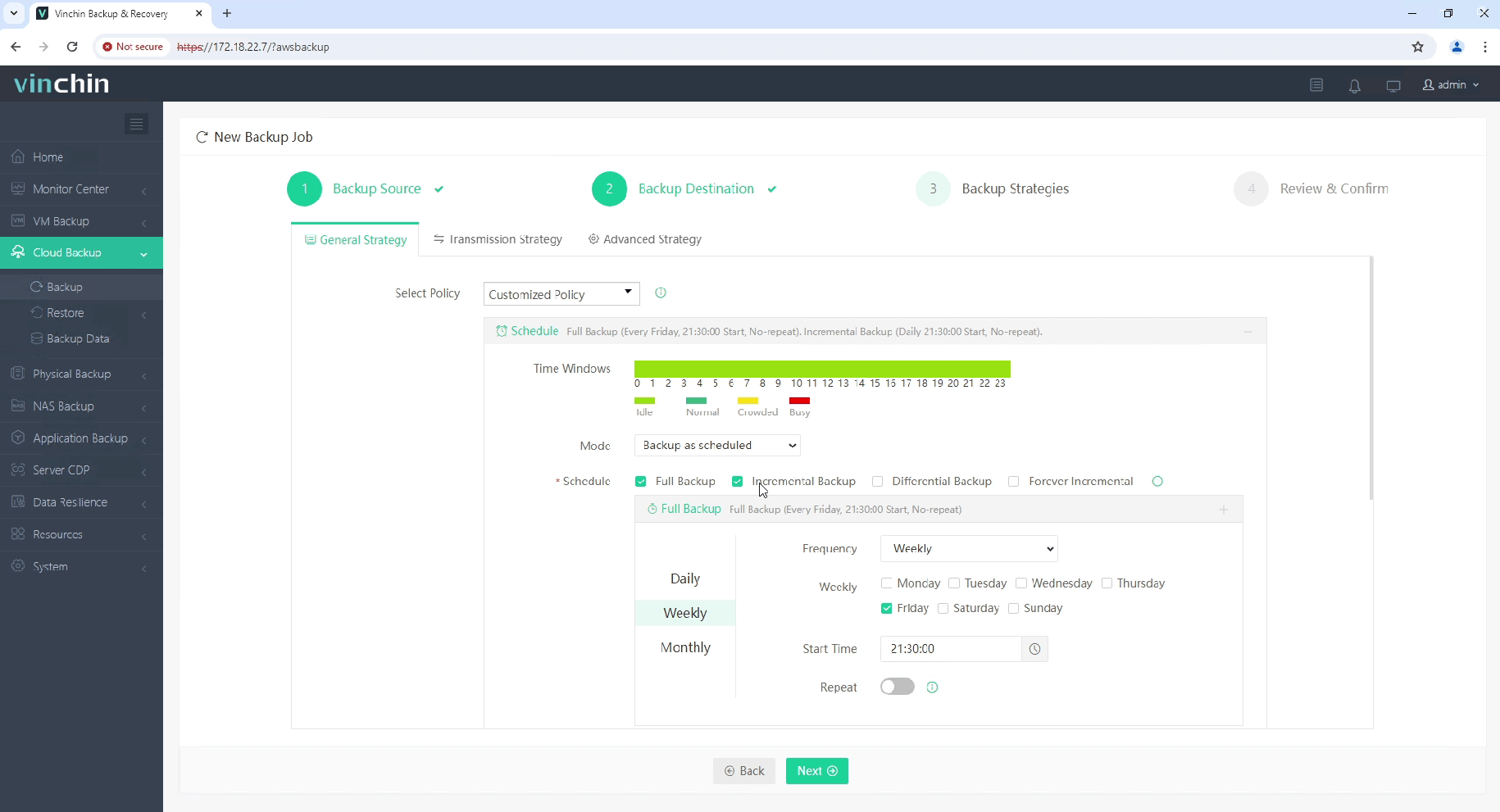
4. Review and submit the job.
Try Vinchin Backup & Recovery’s secure, efficient solutions with its 60-day free trial. Need a custom plan? Contact us!
Restore EC2 instance from snapshot FAQs
1. Q: Do I need to stop my EC2 instance before taking a snapshot?
A: It's recommended but not required. Stopping the instance ensures a consistent snapshot, especially if you're taking a snapshot of a volume that is being actively written to. If you don't stop the instance, you might end up with an inconsistent snapshot due to write operations happening during the snapshot process.
2. Q: Can I delete a snapshot after restoring from it?
A: Yes, you can delete a snapshot after restoring from it, but ensure that you no longer need it for future restores or backups. Deleting a snapshot will also affect any dependent snapshots if they are incremental.
Conclusion
By following the steps outlined in this post, you can efficiently restore an EC2 instance, minimizing downtime and preserving your valuable data. AWS provides comprehensive tools and services to facilitate this process, allowing you to focus on your core business operations while ensuring your cloud infrastructure remains resilient and reliable.
Share on:


